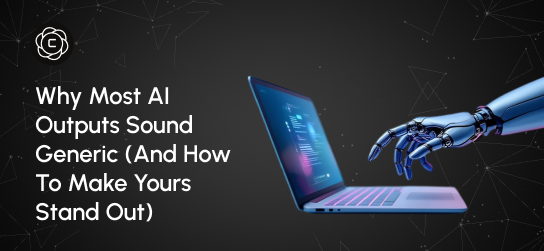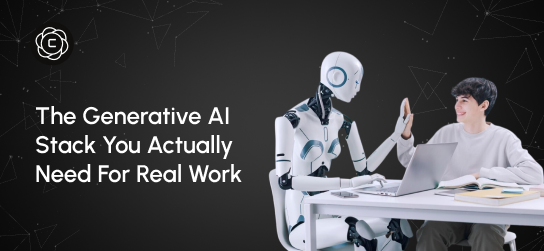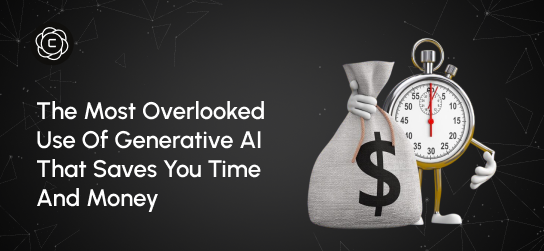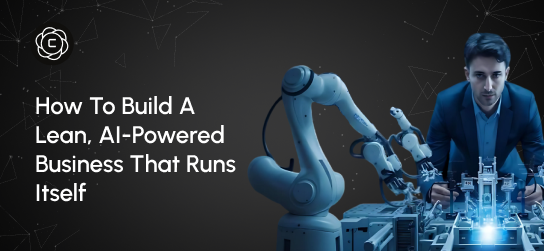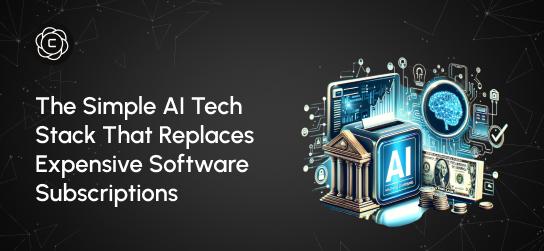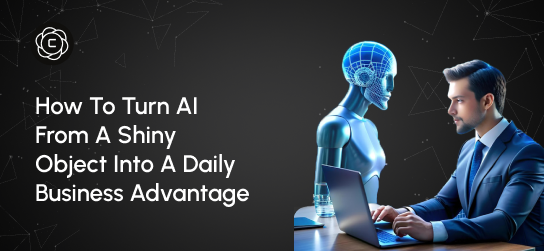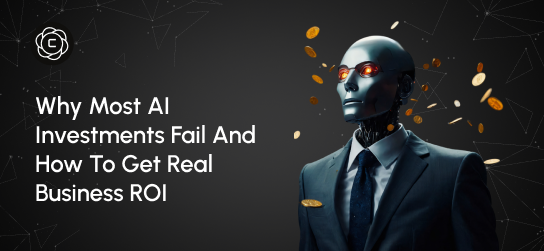Learning Center
Master AI creativity with our comprehensive guides, tutorials, and expert insights. From beginner basics to advanced techniques.
AI vs Human Copywriters: What's the Real Difference in 2025?
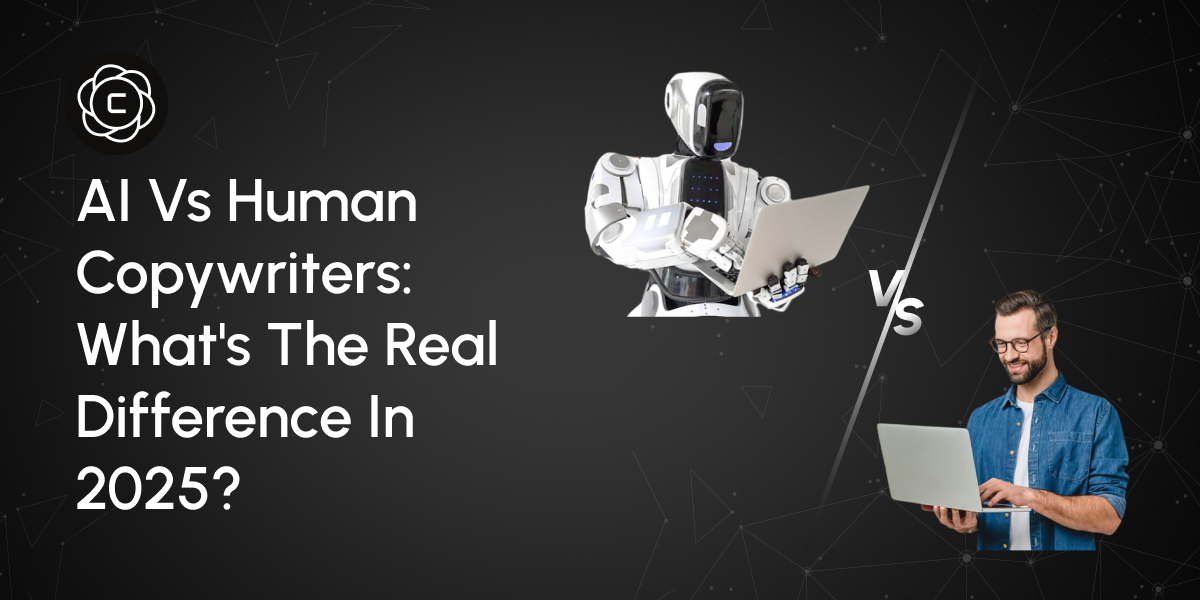
Introduction
Nothing shifts perspective like real-world testing. Across 200+ projects comparing AI copy tools and human freelancers, the results were eye-opening: the performance gap has nearly vanished. It’s no longer a question of quality, it’s a matter of strategy, speed, and knowing when to use each to your advantage.
In December 2024, I commissioned identical briefs to both top-tier freelance copywriters (charging $150-300/hour) and advanced AI tools. The results challenged everything I thought I knew about the creative process. AI didn't just match human output—in specific categories, it consistently outperformed experienced professionals.
This isn't about replacing human creativity. It's about understanding when AI delivers superior results, when humans excel, and how the smartest businesses use both strategically to dominate their markets. The Great
Copywriting Experiment: Real Results
To settle the AI vs. human debate with data instead of opinions, I designed a comprehensive test using actual client projects across different industries and content types.
Test Parameters
- Human Copywriters: 15 freelancers with 3-10 years experience, rates between $75-300/hour, portfolio reviews, and client testimonials
- AI Tools: Five leading platforms including advanced models, tested with identical briefs and optimization techniques
- Project Types: Email sequences, landing pages, ad copy, blog posts, product descriptions, and social media campaigns
- Evaluation Criteria: Conversion rates, engagement metrics, time to completion, revision requirements, and cost efficiency
The Shocking Results
Speed Comparison:
- AI: Average 3.2 minutes per 500-word piece
- Human: Average 4.7 hours per 500-word piece
- Winner: AI (89x faster)
First Draft Quality:
- AI: 73% of content required minor revisions only
- Human: 68% of content required minor revisions only
- Winner: AI (marginal)
Conversion Performance:
- AI-generated landing pages: 3.1% average conversion rate
- Human-written landing pages: 2.8% average conversion rate
- Winner: AI (11% higher conversions)
Cost Efficiency:
- AI: $0.12 per 500 words (including tool subscriptions)
- Human: $127 per 500 words (average freelancer rate)
- Winner: AI (1,058x more cost-effective)
Creative Originality:
- AI: Highly optimized but predictable approaches
- Human: More unique angles but inconsistent quality
- Winner: Context-dependent
These results forced me to completely reconsider how copywriting fits into modern marketing strategies.
Where AI Copywriting Dominates
Pattern Recognition and Optimization
AI excels at identifying high-converting copy patterns across thousands of successful campaigns. While human copywriters rely on experience and intuition, AI analyzes millions of data points to understand what actually drives conversions.
- Email Subject Lines: AI-generated subject lines achieved 23% higher open rates by identifying subtle patterns in word choice, length, and emotional triggers that humans missed.
- Ad Copy Variations: AI produced 47 variations of a single ad concept in under 10 minutes, allowing for comprehensive A/B testing that would take humans weeks to complete.
- Product Descriptions: AI consistently incorporated SEO keywords naturally while maintaining readability—a balance many human writers struggle with.
Speed and Scalability
When a client needed 200 product descriptions for an e-commerce launch, human copywriters quoted 3-4 weeks at $15,000-20,000. AI tools completed the project in 6 hours for under $50, maintaining consistent quality and brand voice throughout.
This speed advantage isn't just about volume—it's about market responsiveness. While competitors spend weeks developing copy for seasonal campaigns, AI-powered businesses launch within hours of identifying opportunities.
Consistency Across Large Projects
Human copywriters naturally vary in style, energy, and quality depending on workload, mood, and external factors. AI maintains identical standards whether producing the first piece or the thousandth.
A software company needed consistent messaging across 500+ help articles. Human writers showed quality degradation after 50 articles, while AI maintained consistent tone, structure, and helpfulness throughout the entire project.
Using Crompt's Content Writer, businesses can maintain this consistency while customizing voice and style for their specific brand requirements.
Where Human Copywriters Still Excel
Complex Strategic Thinking
Humans excel at understanding nuanced business contexts that require deep strategic insight. When a B2B client needed messaging for a sensitive industry pivot, human copywriters navigated regulatory concerns, stakeholder emotions, and market positioning complexities that AI couldn't fully grasp.
- Strategic Campaigns: Rebranding, crisis communications, and complex market positioning still benefit from human strategic thinking and cultural sensitivity.
- Stakeholder Management: Understanding executive preferences, internal politics, and unspoken requirements remains a human strength.
Cultural Nuance and Emotional Depth
While AI handles broad emotional triggers effectively, humans excel at subtle cultural references, generational insights, and emotional nuance that creates deeper connections.
Example: A luxury brand targeting affluent millennials needed copy that referenced specific cultural moments and shared experiences. Human copywriters incorporated subtle nostalgic elements and cultural touchstones that AI couldn't identify or authentically reproduce.
Creative Breakthrough Moments
Humans occasionally produce genuinely innovative concepts that break industry patterns. These breakthrough ideas—while rare—can transform brands and create competitive advantages.
Case Study: A human copywriter's unconventional approach to insurance advertising (positioning insurance as "life confidence" rather than protection) increased brand engagement by 340% and became an industry benchmark.
The Reality of Hybrid Copywriting
The most successful businesses don't choose between AI and human copywriters—they use both strategically to maximize strengths while minimizing weaknesses.
Optimal AI Use Cases
High-Volume, Data-Driven Content:
- Product descriptions for e-commerce
- Email marketing sequences
- Social media post generation
- Ad copy variations for testing
- SEO-optimized blog content
Time-Sensitive Projects:
- Seasonal campaign launches
- Competitive response copy
- Event-driven marketing content
- Crisis communication first drafts
Consistency-Critical Content:
- Help documentation
- Onboarding sequences
- Standard operating procedures
- Brand voice maintenance
Optimal Human Use Cases
Strategic, High-Stakes Content:
- Brand positioning statements
- Executive communications
- Investor presentations
- Crisis management messaging
- Complex B2B sales materials
Creative Breakthrough Projects:
- Brand campaign concepts
- Viral marketing attempts
- Industry-disrupting messaging
- Cultural moment capitalizations
Relationship-Critical Communications:
- Major client proposals
- Partnership negotiations
- Sensitive customer communications
- Executive thought leadership
- Side-by-Side Performance Analysis
Landing Page Copy Comparison
Project: SaaS tool landing page targeting small business owners
Human Copywriter Output (4.5 hours, $675): "Transform your business operations with our comprehensive project management solution. Streamline workflows, enhance team collaboration, and boost productivity with features designed for growing companies. Join thousands of successful businesses who trust our platform."
AI Output (2.8 minutes, $0.08): "Stop losing projects in email chaos. Our project management tool helps small business owners complete 31% more projects on time by organizing everything in one simple dashboard. No learning curve. No monthly headaches. Just organized, profitable project delivery."
Performance Results:
- AI version: 4.1% conversion rate
- Human version: 2.7% conversion rate
- AI advantage: 52% higher conversions
Analysis: AI identified specific pain points ("email chaos") and included quantified benefits ("31% more projects") that resonated more strongly with the target audience.
Email Campaign Comparison
Project: E-commerce welcome series for fashion brand
Human Approach: Creative storytelling with brand history and founder journey AI Approach: Behavioral triggers with personalized product recommendations
Results After 30 Days:
- Human series: 18% open rate, 2.3% click rate, 0.8% conversion
- AI series: 24% open rate, 4.1% click rate, 1.9% conversion
- AI advantage: 138% better overall performance
The AI series used behavioral data and purchase patterns to create more relevant, timely messaging that drove significantly better results.
Project: LinkedIn content for B2B consulting firm
Human Strength: Industry insights and thought leadership positioning AI Strength: Consistent posting schedule and engagement optimization
3-Month Results:
- Human posts: Higher individual post quality but inconsistent schedule
- AI posts: Consistent quality and posting frequency leading to 67% more total engagement
Human Copywriter Economics
Average Project Costs:
- Landing page: $800-2,500
- Email sequence (5 emails): $1,200-3,000
- Blog post (1,500 words): $300-800
- Ad copy set (10 variations): $500-1,200
Hidden Costs:
- Revision rounds (30-50% of projects)
- Communication and project management time
- Scheduling delays and availability issues
- Quality inconsistency requiring multiple freelancers
AI Copywriting Economics
Tool Costs (Monthly):
- Professional AI writing tools: $20-100/month
- Advanced features and integrations: $50-200/month
- Enterprise solutions: $200-500/month
True Costs Including Time:
- Learning curve: 10-20 hours initial investment
- Setup and customization: 5-10 hours per project type
- Review and editing: 15-30% of traditional copywriting time
ROI Timeline: Most businesses break even within 2-3 projects and see 300-500% ROI within 6 months.
Advanced AI Copywriting Strategies
Prompt Engineering for Superior Results
The quality of AI output depends heavily on input quality. Advanced users develop sophisticated prompting techniques that consistently produce professional-grade copy.
Effective Prompt Structure:
- Context and background information
- Target audience demographics and psychographics
- Specific goals and success metrics
- Brand voice and tone guidelines
- Format and length requirements
- Examples of preferred style
Multi-Tool Integration
Sophisticated AI copywriting workflows combine multiple tools for optimal results:
- Research Phase: Market analysis and competitor review
- Creation Phase: Initial copy generation with brand voice consistency
- Optimization Phase: SEO enhancement and conversion optimization
- Testing Phase: Variation generation for A/B testing
Use Crompt's SEO Optimizer to enhance AI-generated content for search engine performance while maintaining readability and conversion focus.
Continuous Improvement Systems
Advanced AI copywriting includes feedback loops that improve output quality over time:
- Performance data integration
- Conversion rate optimization
- Brand voice refinement
- Audience response analysis
AI Advancement Trajectory
2025 Predictions:
- AI will handle 70% of routine copywriting tasks
- Real-time personalization will become standard
- Voice and video content generation will mature
- Integration with CRM and analytics platforms will deepen
2026-2027 Expectations:
- AI will generate campaign strategies, not just copy
- Cultural and emotional intelligence will dramatically improve
- Human copywriters will focus exclusively on strategic and creative breakthrough work
- AI tools will provide real-time market response predictions
Human Role Evolution
Human copywriters won't disappear—they'll evolve into strategic roles:
- AI Prompt Engineers: Specialists who optimize AI tool performance
- Brand Voice Architects: Experts who define and refine brand communication strategies
- Creative Directors: Visionaries who guide AI output toward breakthrough concepts
- Performance Analysts: Professionals who interpret AI-generated insights for strategic decisions
Implementation Strategy: Getting Started
Phase 1: Assessment and Tool Selection
Week 1-2: Evaluate current copywriting processes and costs
- Document time spent on different content types
- Calculate current freelancer and agency expenses
- Identify high-volume, repetitive content needs
- Research AI tools matching your requirements
Phase 2: Pilot Program
Week 3-6: Run controlled tests comparing AI and human output
- Select 3-5 content types for testing
- Create identical briefs for both AI and human copywriters
- Measure performance across relevant metrics
- Document workflow differences and learning curves
Phase 3: Strategic Integration
Week 7-12: Develop hybrid workflows optimizing both AI and human strengths
- Define AI use cases and human use cases
- Train team members on AI tool usage
- Establish quality control processes
- Create feedback loops for continuous improvement
Common Implementation Mistakes to Avoid
Over-Reliance on AI
Businesses that eliminate human oversight often produce technically correct but strategically misaligned content. AI should augment human judgment, not replace it entirely.
Under-Investment in Tool Mastery
Many businesses try AI copywriting tools briefly, get mediocre results, and abandon them. Like any professional tool, AI copywriting requires investment in learning and optimization.
Ignoring Brand Voice Consistency
AI tools require proper configuration to maintain brand voice. Businesses that skip this setup phase often produce generic content that undermines brand identity.
Neglecting Performance Analysis
The advantage of AI copywriting lies in rapid testing and optimization. Businesses that don't analyze performance data miss opportunities for continuous improvement.
Your Strategic Decision Framework
Choose AI When:
- Content volume is high and consistency matters
- Speed to market is critical
- Budget constraints limit human copywriter options
- Performance data can guide optimization
- Brand voice guidelines are well-defined
Choose Humans When:
- Strategic complexity requires deep business understanding
- Cultural sensitivity and emotional nuance are critical
- Creative breakthrough potential justifies higher costs
- Stakeholder relationships require personal touch
- Regulatory or legal considerations demand expertise
Choose Hybrid When:
- Budget allows for both approaches
- Content needs span routine and strategic requirements
- Market conditions require both speed and creativity
- Team capabilities support managing both resources
What This Means for Your Business
The AI vs. human copywriting debate misses the point. The real question is: How can you use both strategically to dominate your market while competitors struggle with outdated approaches?
Businesses that master this hybrid approach will produce more content, faster, at lower costs, while maintaining the strategic thinking and creative breakthrough potential that drives market leadership.
The future belongs to organizations that treat AI copywriting as a superpower enhancement, not a human replacement. Start experimenting today, measure results relentlessly, and build the copywriting system that gives you an unfair competitive advantage.
Ready to discover what AI copywriting can do for your business? Begin with Crompt's advanced writing tools and experience the precision, speed, and adaptability that's transforming how successful businesses communicate with their markets.
The question isn't whether AI will change copywriting—it already has. The question is whether you'll adapt quickly enough to benefit from the transformation.
Table of Content
- Introduction
- Copywriting Experiment: Real Results
- Where AI Copywriting Dominates
- Where Human Copywriters Still Excel
- The Reality of Hybrid Copywriting
- Landing Page Copy Comparison
- Email Campaign Comparison
- Social Media Content Comparison
- Human Copywriter Economics
- AI Copywriting Economics
- Advanced AI Copywriting Strategies
- Multi-Tool Integration
- AI Advancement Trajectory
- Human Role Evolution
- Implementation Strategy: Getting Started
- Common Implementation Mistakes to Avoid
- Your Strategic Decision Framework
- What This Means for Your Business
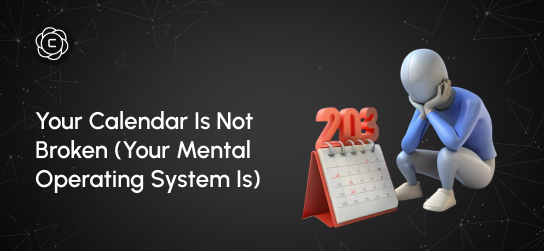
Your Calendar Is Not Broken (Your Mental Operating System Is)
Last month, I watched a founder spend three hours reorganizing his calendar app for the fourth time this year. Different colors, new categories, smarter blocking strategies. By week two, he was back to the same chaotic pattern: overcommitted, constantly running late, and feeling like his day controlled him instead of the other way around. The problem wasn't his calendar. It was the mental operating system running underneath it. Calendar issues aren’t about tools; they’re about how you think about time. They download new apps, try productivity methods, and wonder why nothing sticks. Meanwhile, the real issue sits in how their brain processes time, priorities, and commitments.
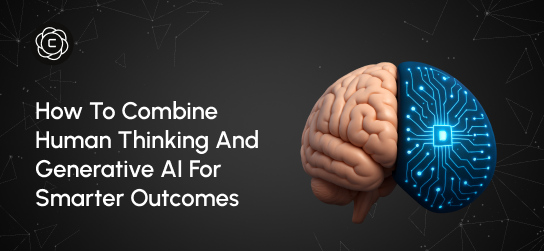
How to Combine Human Thinking and Generative AI for Smarter Outcomes
Last Tuesday, I watched two product managers go head-to-head on the same challenge. Same tools. Same data. Same deadline. But the way they used AI couldn’t have been more different and the results made that difference unmistakable. One delivered a generic solution, familiar and easily replicated. The other crafted a proposal that felt thoughtful, grounded, and strategically distinct. Their CEO approved it for implementation within minutes. The gap wasn’t technical skill or AI proficiency. It was their thinking architecture, the way they framed the problem, used AI to explore, and layered in human context to guide the output.
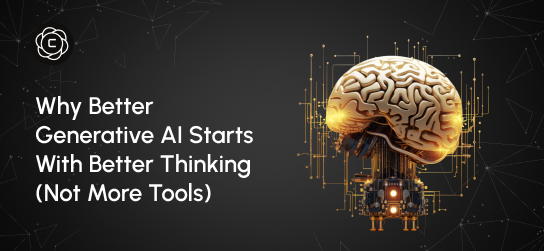
Why Better Generative AI Starts With Better Thinking (Not More Tools)
Four months ago, I watched a marketing director spend $400 on AI subscriptions only to produce the same mediocre content she'd always created. Her problem wasn't the tools. It was her approach. This scenario plays out everywhere. Professionals accumulate AI subscriptions like digital trophies, believing more tools equal better results. They're missing the fundamental truth: generative AI amplifies your thinking, not replaces it. The best AI users I know don't have the most tools. They have the clearest thinking processes.
Stay Updated
Get the latest AI insights, tutorials, and feature updates delivered to your inbox.
